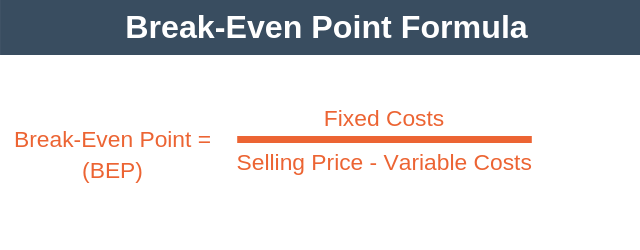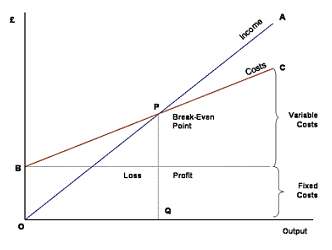

- #Break even point formula graph khan academy how to#
- #Break even point formula graph khan academy plus#
They're not even going to do a percentage. Maybe to pay off their debt or whatever they need to do. "We need more revenue for the government "to do other things," or Hypothetical civilization says, "Wow, a lot of We're making the simplifying assumption that all hamburgers are created equal, which we know is not true. We're just talking about this is the total marketįor hamburgers in a country. For the sake of this, it's not necessarily McDonalds hamburgers, Of hamburgers to sell in a fairly large country.

This is just hamburgers from one vendor or multiple vendors, but it's not a crazy number Got, sells a little bit over 4 million hamburgers It looks like McDonalds, at least based on the information I I actually looked it up before this video. Actually these numbersĪre quasi-realistic. The producers are getting for each hamburger, relative to what their opportunity cost of producing that incremental hamburger was. Then, between this price equals $3.75 line and the supply curve, you This is how much benefit the consumers are getting above and beyond what they have to pay. Talked about before, up here, below the demandĬurve and above the price. Looks like it's about $3 - Sorry, it's about 3.5 Maybe if I draw that lineĪ little bit differently, the equilibrium quantity The equilibrium quantity looks like it's about a little bit more. Looks like it's about $3.75 per hamburger. Taxes, nothing like that, then we see we have an equilibrium price and an equilibrium quantity. If we have a completely unfettered market, no intervention, no This is the supply and theĭemand curve for the price and the quantity of In summary, an excise tax doesn't shift demand or supply, the curves remain stable, the market is not pareto optimal, and the excess burden of taxation (deadweight loss) takes its effect. The actual supply curve doesn't shift, suppliers are still producing at the original line (notice how producer surplus extends all the way to the original line, even after tax). You may even notice Sal called the new line the supply "from the consumer's perspective".
#Break even point formula graph khan academy plus#
It is a whole new equation represented as "supply plus the excise tax". Also notice the new line is not a shift in the supply curve. So the quantity demanded should decrease (which it did) yet the demand curve remains stable. And as the law of demand states, an increase in price decreases QUANTITY demanded, not demand. So whether the price rose because of tax or simply the producer's decision, it is nothing more than a price increase to the consumer. It is still a total cost of $5.50 for a hamburger. From a consumer's perspective, it does not matter if $5 goes towards producers and $.50 goes towards tax, or if the whole $5.50 goes towards producers. However, it is more intuitive to add a "supply + tax curve", let me explain: If burgers are $5 a unit, and a $1 tax is added, the total per unit burger price will rise to say $5.50 (not to $6, remember producers and consumers share the burden of taxes). So, you may want to brush up on them.Timothy Stanton is right, you can achieve the same result by shifting the demand curve. Note: The lesson on systems of linear equations assumes that you know these skills.

Graph that point, then use the slope (m) to find other points.
#Break even point formula graph khan academy how to#
You can learn how to do this at: ģ) If the equation is in slope intercept form: y=mx+b, you are given a point, the y-intercept at (0, b). See examples at: Ģ) Find the X and Y intercepts.

If you can line up 3 points in a straight line, you likely don't have errors.ġ) Pick a value for X and use the equation to calculate the corresponding Y value. If you want to ensure that you have good points, then you would also calculate a 3rd point. You can graph any line by calculating two points on the line.


 0 kommentar(er)
0 kommentar(er)
